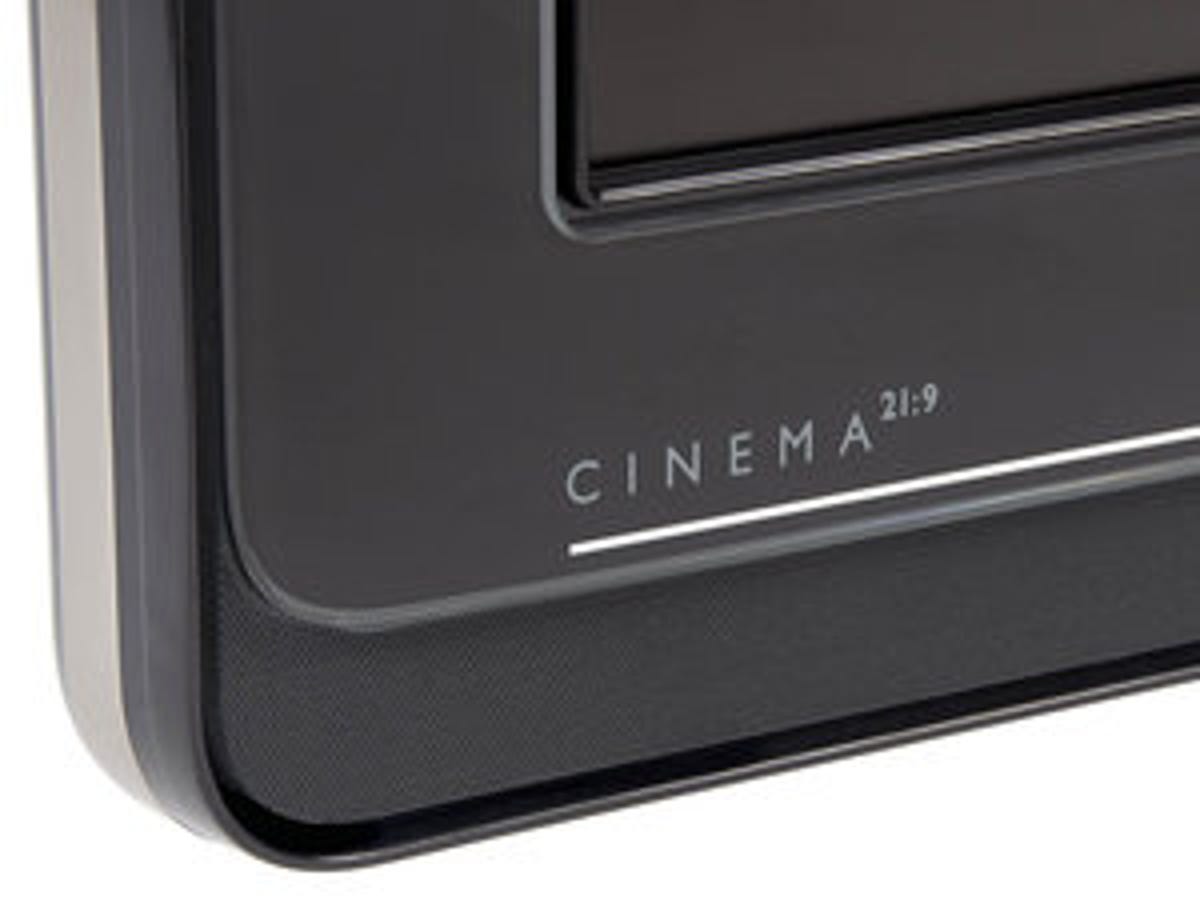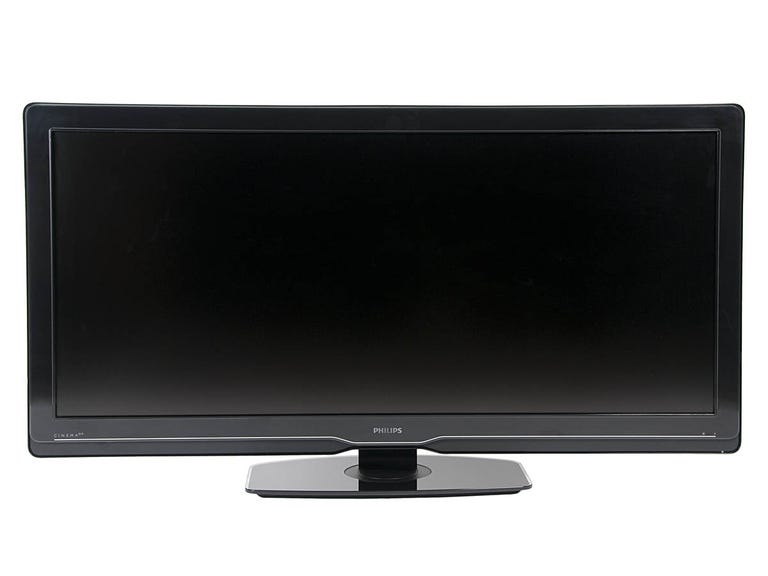 Why You Can Trust CNET
Why You Can Trust CNET Philips Cinema 21:9 (56PFL9954H/12) review: Philips Cinema 21:9 (56PFL9954H/12)
If you're a movie lover with deep pockets, the Philips Cinema 21:9 is unlikely to disappoint, offering a truly immersive way to enjoy films shot in the 2.35:1 aspect ratio in the comfort of your couch. Its great picture quality and fantastic audio are also complemented by a lovely design and plenty of features
Sometimes when we review a TV we find ourselves wondering what the manufacturer was thinking. Why do one thing in one particular way, or why aim a product at one specific part of the market? But, in the case of the 56-inch, 1080p Cinema 21:9 LCD TV, we totally understand what Philips is trying to achieve, and we're actually quite impressed by the concept.
The Good
The Bad
The Bottom Line
At the launch of this telly, some time ago, Philips told us that it wanted to make the ultimate home-cinema TV. It said that, with as many as 50 per cent of movies being shot in the cinema ratio of 2.35:1 or thereabouts, it seemed a shame not to cater for films in this format. Hence this TV's 21:9 ratio stems from Philips' desire to please hardcore home-cinema enthusiasts. But has the company created one of the most exciting products ever, or just a £4,000 waste of time?
Stylish and eye-catching
If you had an unlimited amount of money and you saw this TV for sale, we predict that you'd immediately buy it. The massive screen is nothing short of incredible, and the whole package is brilliantly designed. Philips' high-end TVs are always good-looking machines, and the Cinema 21:9 is one of the handsomest yet.
Finished in a darker colour than usual, this TV is clearly intended to attract the minimum amount of attention during movie time and the maximum amount of attention when it's not showing anything at all. Matching the well-built TV, the remote control is one of the sturdiest we've handled since Pioneer exited the TV market. The remote offers some subtle illumination too, and a massive Ambilight button at the bottom, for engaging and disengaging the coloured pools of light that spill from the TV's sides.

The TV also has a subtle blue light on its underside, just beneath the Philips logo. It's rather unnecessary, but it doesn't distract or offend the eye, so we're fine with it being there.
Some obvious problems
When widescreen TVs first arrived on the market there was an obvious problem: what should be done about 4:3 material? As great as widescreen sets are, plonking 4:3 video in the middle looks silly, and means that, in theory, a brand spanking new 16:9 TV actually shows a smaller image than an old 4:3 ratio TV. The same sort of problem holds true in the case of the Cinema 21:9. While it's fine for watching 2.35:1 films, when you want to watch 1.85:1 movies or TV shows, you have to choose between either having black bars at the left and right of your picture, or using the TV's picture-stretching mode to fill the screen.
The situation becomes trickier with 4:3 material. Philips understands that no-one will want a 4:3 image stretched to fit a 16:9 screen, so it will only pull such material out to 16:9 widths. This is the same ratio you'll have seen on many widescreen TVs over the years, and videophiles detest it with all their hearts.
What do we suggest then? Frankly, the idea of distorting an image, no matter how skilfully, just isn't our cup of tea. We think a movie or TV show deserves to be seen in the correct aspect ratio. In the same way that black bars on a 2.35:1 movie don't really upset us, we can live with big black bars at the left and right of a 16:9 or 4:3 image. Our suggestion is that you use the full width of this screen only for 2.35:1 material. This is how your local cinema does it, so we can't see any reason why it won't work for you at home.
Picture quality
This TV's picture quality surprised us. Philips has always had its own specific problems with image quality, but this TV is slightly different. It's not without flaws by any stretch of the imagination, but we really like its output overall.
The main issue we noticed was that the TV seems to have a de-interlacing problem. This is never especially severe, and won't affect progressive content, like Blu-rays or Sky+HD. We noticed it most with TV shows via the built-in Freeview receiver. Neighbours and The Jeremy Kyle Show, for example, both suffered from jagged lines on fast-moving objects. This problem wasn't severe, and we could live with it, but you might want to see it for yourself before you lay down your cash.
That said, we honestly don't think that most people who buy this TV will be planning on predominantly watching standard-definition TV shows. Also, apart from the de-interlacing issue, we actually liked the Freeview picture. There was plenty of detail and, after some minor tweaking, the colours looked very pleasing.
HD material, especially 2.35:1 movies, looked amazing. We were initially slightly worried that Blu-rays would suffer, because the TV has to zoom the picture to remove black bars. In practice, this didn't prove to be an issue. HD pictures looked superb and we could have spent plenty of time happily watching Star Trek, Casino Royale and The Dark Knight in HD. One interesting point about the most recent Batman movie is that, if you watch it on this TV, you'll lose the top and bottom of the IMAX shots. This might not bother you, but, if IMAX becomes more popular, it could be an issue.
Audio is half the experience
We have nothing bad to say about this TV's sound. Considering the set has a built-in speaker system, its audio is superb. Philips has achieved this by placing tweeters on the front of the set, for high-end sounds and speech, and these are backed up at the rear with a pair of woofers.
This separated system means you get very clear dialogue, and deep, rich bass. It's a sad irony that the people likely to buy this TV will probably also have kick-arse AV equipment and powerful speakers. But it's good not to have to turn your amp on when you just want to watch EastEnders.
Extra features
This TV also has plenty of funky toys that make it more attractive to tech lovers. For a start, it's got DLNA, which means you can stream audio and video over your home network to this TV. We applaud the inclusion of this feature, but we wish the TV supported more in the way of codecs.
The newly designed menus are excellent, and we love the fact that you can customise your home screen to allow for fast access to your favourite inputs. We also adore the Ambilight feature. It's the sort of thing that'll you miss if you ever have to watch a TV without it. Unfortunately, Philips hasn't put a fourth Ambilight strip on the bottom. For a TV that looks great hanging on the wall, this is a missed opportunity to make it look even better.
Conclusion
We really like the Philips Cinema 21:9. It's something of gimmick, but, when you watch a 2.35:1 movie on the screen, in the dark, with Ambilight on, you feel like you're enjoying a movie in the most immersive way possible.
As much as we like this set, though, we can't help but think it would be bested by a good video projector. Take one of JVC's amazing DLA machines, for example, and you'll have a home-cinema experience that can't easily be beaten. Such a set-up may be less convenient for day-to-day viewing, but this TV isn't intended for day-to-day use anyway -- it's aimed at movie fans. Having said that, we wouldn't discourage you from buying this TV. We like almost everything about it and, aside from a few minor niggles, we think it's an excellent piece of kit.
Edited by Charles Kloet
